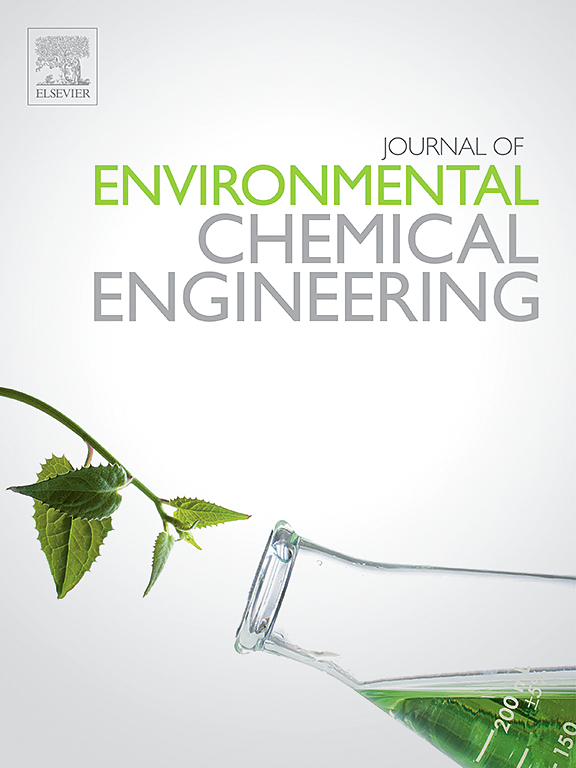Nanostructured aerogels for adsorptive removal of pharmaceutical pollutants from wastewater: A review on synthesis and application
IF 7.4
2区 工程技术
Q1 ENGINEERING, CHEMICAL
引用次数: 0
Abstract
The pharmaceuticals including antibiotics, analgesics, antidepressants, and hormones, etc. are produced in large quantities and subsequently discharged into the environment. Such toxicants are found in aquatic systems and can seriously ruin the water quality subsequently affecting human health and other components in the ecosystem. Aerogels are light weight porous materials that are potentially alternative of powdered nanomaterials for wastewater treatment. The aerogel-based adsorbents have found excellent properties including low density, highly stable, reusable, and easy to separate from solution. This review summaries the synthesis, and tailoring strategies of various types of aerogels for drug adsorption. The adsorption mechanisms and parameters affecting the adsorption of pharmaceuticals onto aerogels have been discussed. Freeze-drying (FD) is the most investigated method compared to supercritical drying because of its low energy consumption and consequent benefits to the environment. The aerogels based on a single material demonstrated a lower adsorption rate than the customized multifunctional hybrid aerogels. The adsorption efficiency of aerogels can be increased by chemical modifications including amination, carboxylation, and sulfonating. This review also explored the mechanistic insight of different drug adsorption onto various aerogels. Hydrogen bonding, electrostatic interaction, π-π stacking, and hydrophobic interactions, etc. are primary forces involved in the drug molecules' adsorption onto aerogels. The literature demonstrated that aerogel materials can be reused for several adsorption-desorption cycles. Furthermore, the sustainability footprint approach was utilized to assess the sustainability of nano-structured aerogels in comparison to alternative materials used for water purification.
用于吸附去除废水中制药污染物的纳米结构气凝胶:合成与应用综述
包括抗生素、镇痛剂、抗抑郁剂和激素等在内的药品被大量生产,随后排放到环境中。这些有毒物质存在于水生系统中,会严重破坏水质,进而影响人类健康和生态系统中的其他成分。气凝胶是一种重量轻的多孔材料,可替代粉末状纳米材料用于废水处理。气凝胶吸附剂具有密度低、高度稳定、可重复使用、易于从溶液中分离等优良特性。本综述总结了用于药物吸附的各类气凝胶的合成和定制策略。还讨论了影响气凝胶吸附药物的吸附机理和参数。与超临界干燥相比,冷冻干燥(FD)是研究最多的方法,因为它能耗低,对环境有益。基于单一材料的气凝胶的吸附率低于定制的多功能混合气凝胶。通过胺化、羧化和磺化等化学改性可以提高气凝胶的吸附效率。本综述还探讨了各种气凝胶吸附不同药物的机理。氢键、静电作用、π-π堆积和疏水作用等是药物分子吸附到气凝胶上的主要作用力。文献表明,气凝胶材料可以重复使用,进行多次吸附-解吸循环。此外,还利用可持续性足迹法评估了纳米结构气凝胶与用于水净化的替代材料相比的可持续性。
本文章由计算机程序翻译,如有差异,请以英文原文为准。
求助全文
约1分钟内获得全文
求助全文
来源期刊

Journal of Environmental Chemical Engineering
Environmental Science-Pollution
CiteScore
11.40
自引率
6.50%
发文量
2017
审稿时长
27 days
期刊介绍:
The Journal of Environmental Chemical Engineering (JECE) serves as a platform for the dissemination of original and innovative research focusing on the advancement of environmentally-friendly, sustainable technologies. JECE emphasizes the transition towards a carbon-neutral circular economy and a self-sufficient bio-based economy. Topics covered include soil, water, wastewater, and air decontamination; pollution monitoring, prevention, and control; advanced analytics, sensors, impact and risk assessment methodologies in environmental chemical engineering; resource recovery (water, nutrients, materials, energy); industrial ecology; valorization of waste streams; waste management (including e-waste); climate-water-energy-food nexus; novel materials for environmental, chemical, and energy applications; sustainability and environmental safety; water digitalization, water data science, and machine learning; process integration and intensification; recent developments in green chemistry for synthesis, catalysis, and energy; and original research on contaminants of emerging concern, persistent chemicals, and priority substances, including microplastics, nanoplastics, nanomaterials, micropollutants, antimicrobial resistance genes, and emerging pathogens (viruses, bacteria, parasites) of environmental significance.
 求助内容:
求助内容: 应助结果提醒方式:
应助结果提醒方式:


